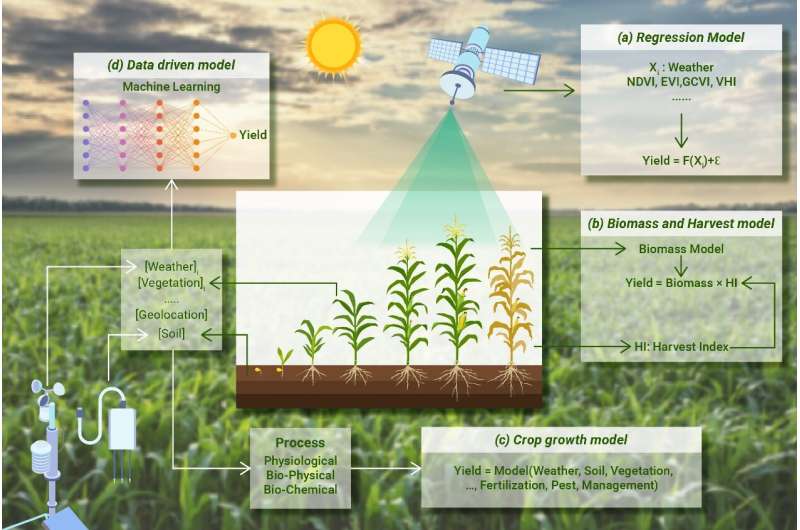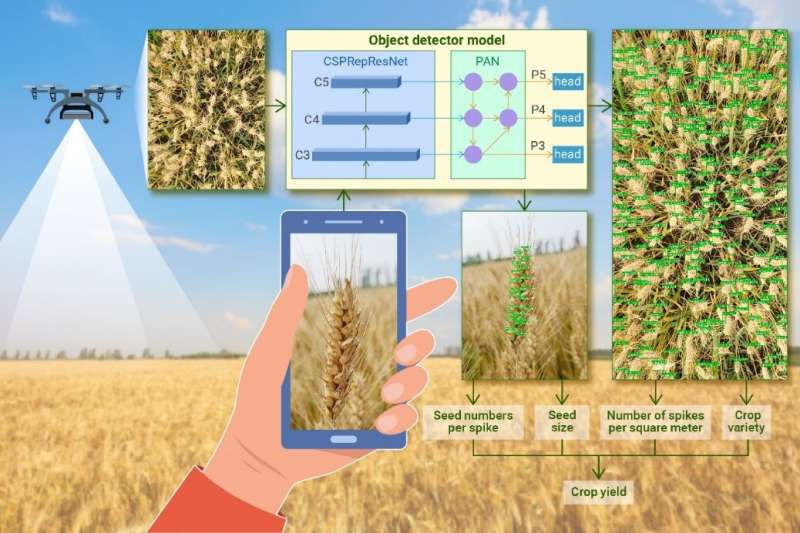Conflicts of interest need to be avoided in publishing publicly available crop information, says study

Satellite-driven crop monitoring has become a main method to derive crop information at local, regional and global scales.
However, there is a lack of quantitative, objective, and robust methods to ensure the reliability of crop information, which will reduce the applicability of crop monitoring and leads to uncertain and undesirable consequences. In this paper, recent progresses in crop monitoring were reviewed and the challenges and opportunities for the future were identified.
“Crop monitoring system is telling us how much food was produced, what kind of food it was, and where it was produced. This information is essential for countries to make decisions. If it is not available or not verified properly, countries will either lack the basic information for their decisions or run the risk of taking decisions based on inaccurate information,” said Prof. Bingfang Wu (Aerospace Information Institute, the Chinese Academy of Sciences), leader of the CropWatch team and co-chair of Group on Earth Observations Global Agricultural Monitoring Initiative (GEOGLAM).
Crop conditions information is critical for policymaking as well as preventing market disruption and speculation, thereby contributing to an early warning of food insecurity. Most crop monitoring systems have the crop condition component and use simple anomalies of metrics from the average values to investigate crop conditions.
However, the anomaly metrics cannot provide quantitative assessments due to a lack of standard categorized methods, especially under crop stress driven by drought, nutrients deficit, diseases and pests. Furthermore, the paper finds that some drought indices published in literature confuse meteorological drought with agricultural drought. They may generate false drought information if applied.
Crop production is forecasted with the support of crop area estimates and yield predictions for specific regions. It is the core element of crop monitoring, but only a few global agricultural monitoring systems include the operational components for crop area estimation and yield prediction. One of the reasons is the lack of ground data outside of the country, not to mention ground data availability globally. Crowdsourcing data could serve as a potential solution for closing the ground data gaps.

“With many types of smartphone sensors, everyone could take and upload geo-tagged photos of crops. This information can be used to calibrate crop condition and area estimation models,” said Dr. Miao Zhang, a core member of the CropWatch Team. Previously, data collection of the actual crop yield is labor-intensive and costly. A new method involving artificial intelligence and computer vision to count the number of spikes, the number of seeds per spike and the sizes of seeds was developed.
“This is a novel method to collect field yield data,” added Dr. Hongwei Zeng, another core member of the CropWatch Team.
In addition, yield prediction component is the weakest element in crop monitoring due to large uncertainties. Current models and/or vegetation indices do not fully capture determinants of crop production. CropWatch has adopted averaged values of multiple yield models to reduce the uncertainty of yield prediction. New sensors need to be explored.
Although satellite images are beautiful and objective, their production and analysis have profound political and economic implications. Knowledge-based analysis of satellite derived metrics might lead to uncertain and undesirable consequences. One solution is to avoid conflicts of interest when organizations publish publicly available crop information.
User participation in the complete process of crop monitoring could improve the reliability of crop information. Encouraging users to obtain crop information from multiple sources also could prevent unconscious biases.
“The best solution is that users have their own crop monitoring system, but this is difficult for most users to achieve due to the development and maintenance costs and technology constraints. For this reason, all components and functions of CropWatch have been upgraded to provide application programming interfaces (APIs) in the CropWatch-Cloud, which enables users to complete crop monitoring independently and autonomously from the data download to the final synthesized analysis without additional investment in storage and computational resources. For example, the Mozambique Ministry of Agriculture and Rural Development (MARD) have applied CropWatch to enhance its capability and reliability of crop monitoring for Mozambique. This effort was recognized as one of the best rural solutions in 2020 by the International Fund for Agricultural Development and one of the good practices in South-South and Triangular Cooperation for Sustainable Development,” Prof. Wu said.
The study is published in the journal National Science Review.
More information:
Bingfang Wu et al, Challenges and opportunities in remote sensing-based crop monitoring: a review, National Science Review (2022). DOI: 10.1093/nsr/nwac290
Citation:
Conflicts of interest need to be avoided in publishing publicly available crop information, says study (2023, February 24)
retrieved 24 February 2023
from https://phys.org/news/2023-02-conflicts-publishing-crop.html
This document is subject to copyright. Apart from any fair dealing for the purpose of private study or research, no
part may be reproduced without the written permission. The content is provided for information purposes only.
For all the latest Science News Click Here
For the latest news and updates, follow us on Google News.

